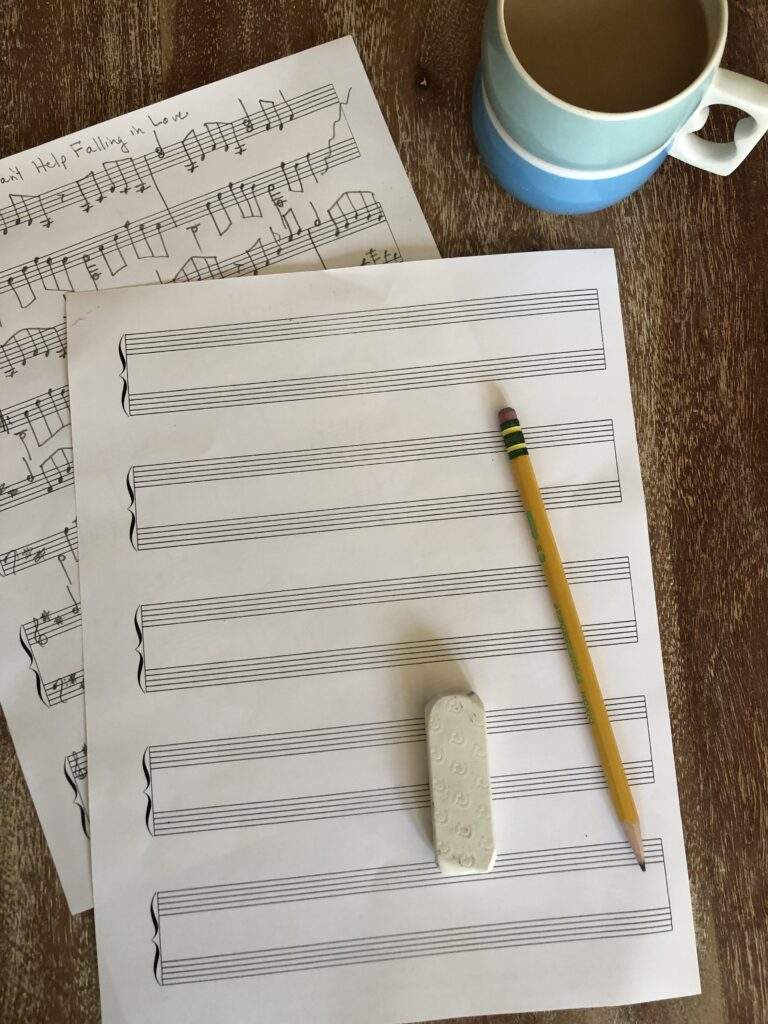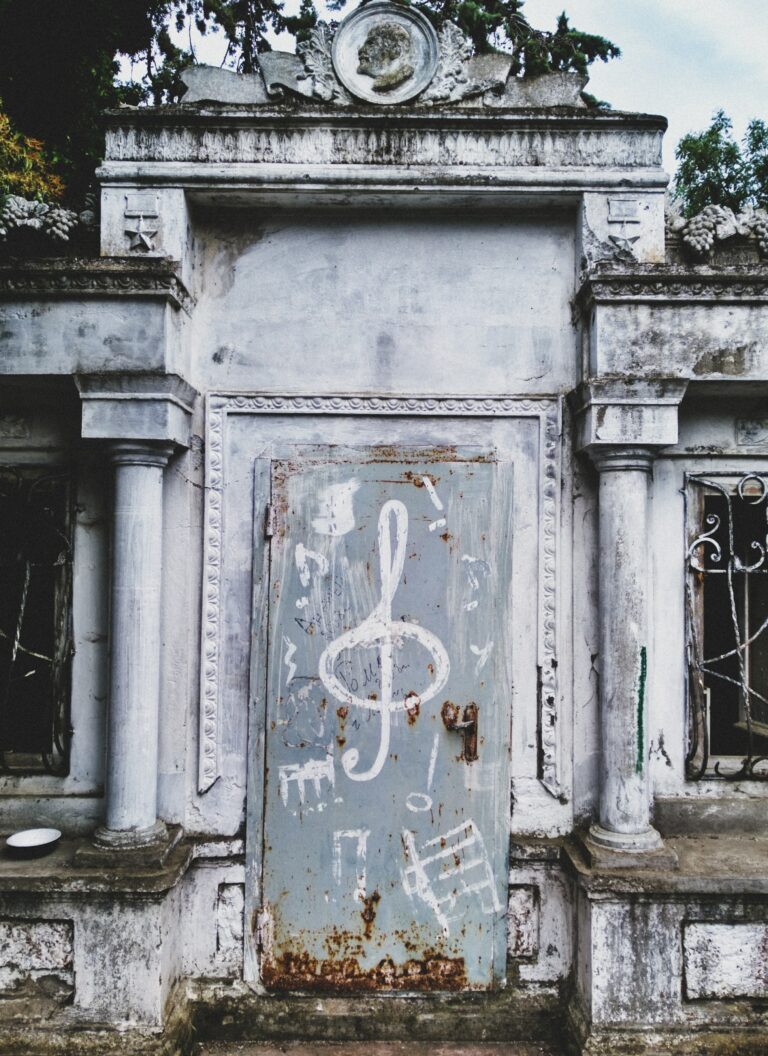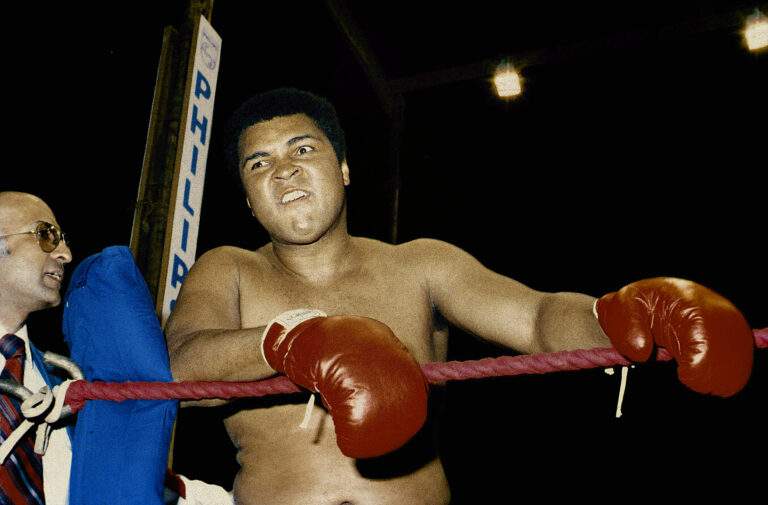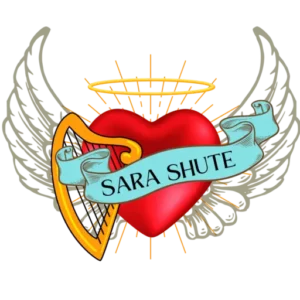Lessons On
Arranging Music For The Harp
My approach to arranging for the harp and what we will work on together.

The basic steps of making an arrangement:
01.
Decide on the piece(s) you would like to arrange.
Be sure to think about whether or not it lends itself to the harp. Prince’s Kiss would be VERY difficult to make sound good on the harp. Pieces that already have a keyboard part in them have a head start in being more playable. (Coldplay)
02.
Decide on the Key.
This alone can kill an arrangement if you get it wrong. Not because of how many sharps or flats per se, but because it determines the register you will be playing in. In certain keys you will be forced either to have the melody too high or too low. To my ear too high often sounds shrill. I try to avoid it when I can. Too low just doesn’t carry nicely and gets, as Lucile Lawrence would say, boomy. The best arrangement in the world can be absolutely tanked by writing it in the wrong key.
03.
Get the chord progression and Melody written out.
For now keep it simple. Start by building a solid foundation. You can get fancy pants after your basic outline of the piece is in place.
04.
Determine how far you want to go.
Your basic choices are to write a clean and simple arrangement, which is perfect for jobs, or you can make it more of a showpiece in your repertoire. The showpiece will obviously require more upfront work and more maintenance, but if it is a good selection you can use it for the rest of your life. Basic arrangements are well-suited to those occasions when you have to play something you aren’t terribly interested in.
05.
Write it out, play it, record it.
Listen to the recording you have made. Is it ticking the boxes it is supposed to? Does it sound basic, not developed, half baked? If so, why? Would a pianist or rock band get away with this? Answer these questions honestly.
I think many classically trained musicians make the mistake of thinking that the non-musical audience members have no idea what they (the harpist) are playing.
They know. You better believe it; they know. They can tell if you are comfortable performing it or not. If it is a popular song they know when you are making mistakes.
My kids know Here Comes the Sun from the Bee Movie, not from listening to Abbey Road. They know when I’m messing up : ) And so does everyone else that is listening. Unless you are an amazing sight reader or talented jazz musician you need to be well prepared to make a good impression- Like it or not, people can tell when you are half-assing it.
You keep repeating step five until you are all done. If you just can’t get happy with your arrangement go back and re-evaluate your key. The register you pick is that important.

Why I started arranging all of the music I play.
When I was 12 I started playing popular music on the harp. Two main things stood in my way: either the music I wanted to play wasn’t arranged for the harp, or if it was it was too difficult for me, not in my style, or just plain goofy.
After I began playing professionally I started arranging out of pure necessity.
Most of the things I wanted to play were just not available, and as a former Israel and USA International harp contestant I could play anything that was published. But none of the music I was looking for was published. I understand why many of these selections had never been published, but it created a void for me.
For some reason, no one ever bothered to publish Johnny Cash's Ring of Fire, Penny Lane by the Beatles, or Lola by The Kinks (LOL). So, here I am, hundreds of arrangements later, ready to help you solve harp music related problems. (For husband, animal, and child problems you are going need to head elsewhere.) But questions about the harp-I most likely have you covered.

My Approach to Arranging
Are you hoping to develop your skills as an arranger, or do you just have one ‘song’ you would like to work on?
I personally lean more towards a transcription-ish arrangement of a piece, rather than reinventing its’ character. That may change, but as of 2022..that’s where I’m at.
I listen to popular music almost exclusively. These musicians are important to me; and I hold them in high regard. For this reason, when I am arranging something I ask myself the following question:
“If the original artist were to walk by while I’m playing their song…would they punch me in the face?”

I work on the arrangement until I believe the answer to the above question would be no.
Again, that is my personal approach. In general, if I am bothering to cover a song it is because I like the original. As a big fan of the artist, I usually take the view point that there is not a lot of room for improvement on the original. I simply wish to play it on the harp!
I do not add a bunch of random virtuoso stuff just to show off. I put things in place that I believe further the song (on the harp.)
If a big, crazy arpeggio moves the music forward I will use that. If the music doesn’t call for it…it’s out.
Again, it’s a personal preference of mine. The main point is that whether or not you and I are stylistically similar-I can probably still tell you if something is ‘working’ or not. If it’s not working, I can probably tell you why. Hopefully together we can find your ideal arranging style.
Your Arrangement Will Be A Combination Of How You Hear Music and How You Filter That Through The Harp.
Of course, the level of difficulty is determined by how advanced you are now, and how much you are willing to practice it before you play it at a job.
I do believe it is possible to make a decent intermediate level arrangement that is wholly appropriate to play at a professional job. And never have to practice it. That, ladies and gents, is what I call a great arrangement.

Great news! This is one of the few times in your life where the more voices you hear the better.
For the fleshing out portion of you arrangement your success lies here. If two voices are all you can handle technically, then that is what you have to do. And there is nothing wrong with that.
But if you are an advanced player and you are not filling out your middle/ inner voices it’s like a band with only a vocalist and a bass player. Does that description sound like something you would enjoy listening to? I’m assuming not. All of your listeners can tell if your middle voices are missing! Again, they may not be able to put their finger on it, but they know if it sounds full or not. You really do need at least three active voices in there.
Minimum Input/ Maximum Output
That’s the goal, right? A really slick arrangement sounds good (to the general public), and may not be as difficult as it sounds. We can discuss this during your lessons.
1 Hour Lesson $80
